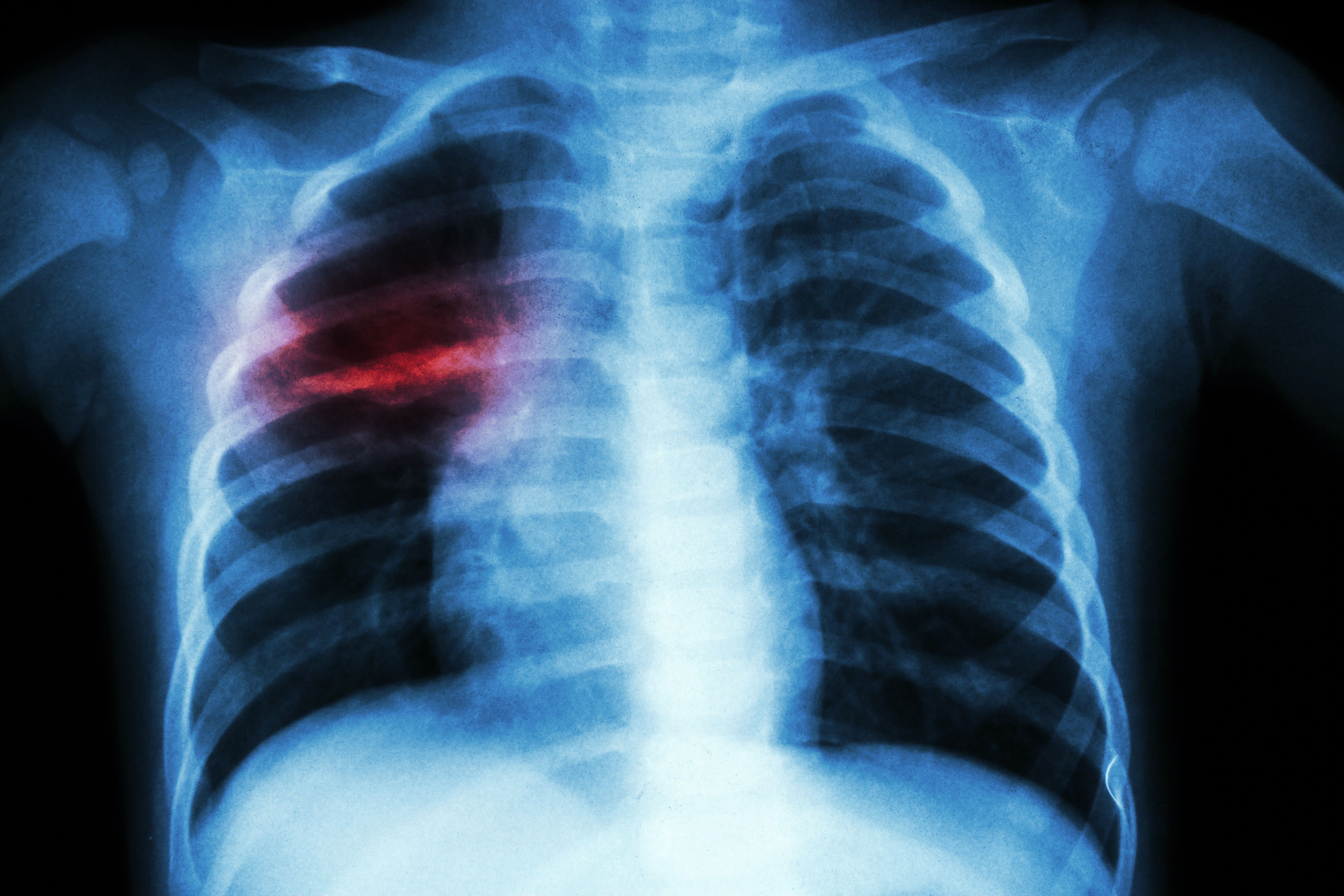Procalcitonin to diagnose pneumonia in children with influenza-like illness
Procalcitonin can be useful for point-of-care testing in patients with influenza-like illness and a prolonged fever, guiding the indication for a chest radiograph while helping to avoid radiation exposure.
Procalcitonin to diagnose pneumonia in children with influenza-like illness | Image Credit: © stockdevil - © stockdevil - stock.adobe.com.

Investigators of a study published in Indian Pediatrics determined that procalcitonin (PCT) is an effective tool for point-of-care testing in patients with influenza-like illness (ILI) and fever longer than 4 days to guide indication for a chest radiograph (CXR) to rule out radiographic pneumonia.
To evaluate the usefulness of PCT, investigators conducted a prospective cohort study in 185 children aged 3 months to <18 years with ILI and fever lasting more than 4 days at the pediatric emergency department (ED) of a tertiary hospital. Patients were seen during the influenza season in 2020.
A CXR was performed for patients with PCT greater than 0.5 ng/mL. This cut off was used because it is the "classical level used to differentiate between viral and bacterial infections," according to the study.
ILI was defined as the abrupt onset of fever and other general symptoms such as:
- Fatigue
- Muscle aches and/or headache
- Signs or symptoms of acute respiratory infection (nasal flare, odynophagia, coughing , shortness of breath, grunting, tachypnea/dyspnea)
The appearance of every eligible participant was systematically evaluated using he Pediatric Assessment Triangle. Children were considered not well-appearing if this was abnormal, according to the study authors.
Radiographic pneumonia was defined as, "Radiologist reporting definite or equivocal 'consolidation', 'infiltrate', and/or 'pneumonia' on the CXR. This definition was considered because patients with these radiological findings are usually treated with antibiotics for suspected bacterial etiology," stated the study authors.
Children were excluded if they were not well-appearing, hypoxemic, if they were receiving antibiotics, had another source of fever upon physical examination that warranted antibiotic prescription, and if informed consent was not obtained.
Descriptive statistics were reported as absolute rates for categorical variables and as median (IQR; 25th to 75th percentile) for continuous variables and the Kolmogorov-Smirnov test was used for data distribution.
Pearson Chi-square test or Fisher exact test made statistical comparisons for categorical variables and Student t test or the Mann-Whitney U test for continuous variables. P values < 0.05 were considered statistically significant.
PCT > 0.5 ng/mL (0.5-10) was observed in 24.9% of patients, with a CXR ordered in all but 1 case (97.8%). A diagnosis of radiographic pneumonia and prescription antibiotic treatment was observed in 51.1% of patients, diagnosed by the attending pediatrician.
Radiographic pneumonia reported by the radiologist occurred in 14 patients (31.1%; 95% CI, 19.5-45.7%) and all were found to have PCT greater or equal to 0.7 ng/mL. Nine had a PCT at or grater than 1 ng/mL.
For CXR interpretation between the emergency pediatrician and radiologist, the concordance rate was 75.5%, with a moderate agreement (Kappa 0.515 [P < 0.001]).
Of the 22 children with PCT > 0.5 ng/mL and a normal CXR, all of which were managed as outpatients, 1 or more additional complementary tests were performed in 36.4% of cases. Two of these patients were diagnosed with a urinary tract infection and 1 with an adenovirus infection.
For the 139 (75.1%) patients with a PCT value ≤ 0.5 ng/mL, 137 (98.6%) were managed in the outpatient with symptomatic treatment. The last 2 cases "warranted a CXR which was unremarkable in both. At evolution, no radiographic pneumonia was [diagnosed] in any of them," wrote the study investigators.
They concluded that PCT "is a useful tool for point-of-care testing in patients with ILI and fever > 4 days to guide the indication for CXR to rule out radiographic pneumonia." The authors added this can help in avoiding unnecessary radiation exposure for the children.
Point-of-care PCT testing could improve the management of children with suspected pneumonia in clinical practice, and can be performed quickly in the ED.
Reference:
Hernández-Bou S, Trenchs V, Guirado C, Castrillón I, Luaces C. Procalcitonin as point-of-care testing modality for the diagnosis of pneumonia in children with influenza-like illness. Indian Pediatr. 2024;61(1):57-61.
Newsletter
Access practical, evidence-based guidance to support better care for our youngest patients. Join our email list for the latest clinical updates.
The Role of the Healthcare Provider Community in Increasing Public Awareness of RSV in All Infants
April 2nd 2022Scott Kober sits down with Dr. Joseph Domachowske, Professor of Pediatrics, Professor of Microbiology and Immunology, and Director of the Global Maternal-Child and Pediatric Health Program at the SUNY Upstate Medical University.